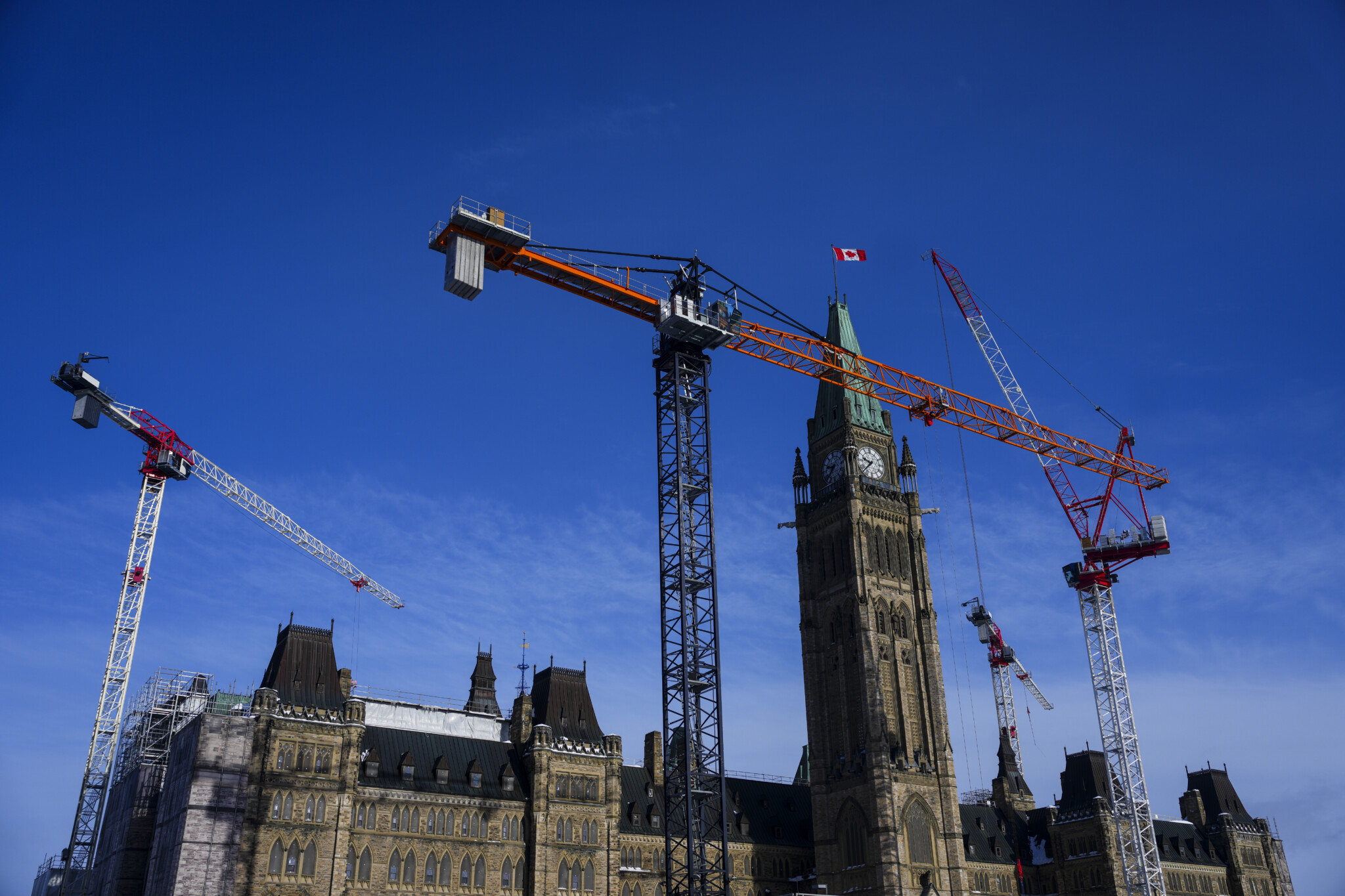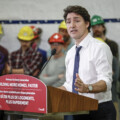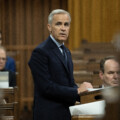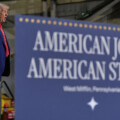Donald Trump’s latest round of threats—a 25 percent tariff on Canadian goods and repeated jabs that Canada “only works” as America’s 51st state—landed like grenades here at home. But they also revealed an uncomfortable truth: it’s hard for Canada to project strength internationally when we haven’t built the foundations of a strong, modern country domestically. We need homes our children can afford, infrastructure that connects a vast nation, a resource sector that gets to “yes”—and yes, a military capable of defending our sovereignty.
In this federal election, both frontrunners—Pierre Poilievre and Mark Carney—claim they have the solutions: build again, and build more. Their promises range from millions of new homes to an ambitious, unencumbered east-west trade and energy corridors. But Canadians have heard big talk before. If we truly want progress, we must confront the hypocrisies and contradictions that have kept our economy from reaching its full potential.
Reckoning with our complacency
How did a country with so much promise end up so paralyzed? In a word: complacency. For decades, Canada coasted on their abundant resources, proximity to the U.S., and an immigration-friendly brand that attracted global talent. We treated prosperity as automatic and stopped doing the hard work of statecraft. Instead of building new mines, power grids, railways, pipelines, or housing for our growing population, governments fell back on handouts: boutique tax credits, new social programs, and symbolic wins tailored to narrow voter segments.
Now, all the hard choices we failed to make are catching up with us. Housing prices are stratospheric. Highways and transit systems are buckling under rapid population growth that masks a decade of economic stagnation. Our internal market is choked by overlapping provincial regulations—even as premiers once again promise a “new deal” by Canada Day. A country that once built the Canadian Pacific Railway and the St. Lawrence Seaway now struggles to complete the projects a modern economy requires.
But the mood is shifting. Canadians want results. They see untapped potential—if only governments would get out of the way and let them build, invest, and innovate. New initiatives like Build Canada reflect this desire to move past tokenism and toward tangible progress. And for once, both leading candidates for prime minister are taking notice.
The question is whether they’re serious. Can they deliver more than rhetoric? Or will they continue to praise the “hardworking Canadian” in their lofty speeches while blocking the very efforts that would allow them to succeed?
Let the people build
Nowhere is the failure to build more evident than in housing. Canada welcomed 5 million newcomers over the past 10 years—among the highest per-capita immigration rates in the world—yet made little effort to expand the housing supply. Ontario’s Greenbelt policy exemplifies this contradiction: we restricted suburban sprawl in the name of preserving farmland (a defensible goal) while also blocking the dense, family-friendly infill housing needed to accommodate population growth within the GTA. Build housing? Of course. Just not here, or there—and definitely not like that.
The result? Existing homeowners enjoyed soaring property values and a sense of environmental virtue, while an entire generation watched affordability vanish in a decade. The broader economy now suffers under the weight of housing scarcity in Toronto—and mirrored in Vancouver—where regional policy failures ripple out into national consequences.
The same hypocrisy shows up across countless policy areas. When Trump’s tariffs threatened Canadian industries, Toronto city councillors rushed to champion “buy local” slogans and praise the resilience of small business. But when they had the chance in December to legalize small-scale retail in residential neighbourhoods—opening the door for cafés, salons, and corner stores—they voted no. We applaud the “little guy” in speeches, then block them through outdated zoning and endless regulatory hurdles.
This gap between rhetoric and reality isn’t just ironic—it’s corrosive. Canadians are told to dream big but are blocked when they try to start small. If we want to build again, governments must stop standing in the way—and Canadians must extend that same permission to each other by being more open to change in our own communities. A culture of building requires not just better policy, but a shared willingness to say yes.
Energy superpower? More like super hypocrites
We see the same contradiction in our energy sector. Politicians boast that Canada is an “energy superpower,” yet routinely thwart the projects that would make it so. We have the world’s third-largest oil reserves, vast renewable and nuclear potential, and advanced clean-tech ready to scale. But projects, pipelines, export terminals, and power plants languish in limbo—delayed by endless assessments, vetoes, and legal paralysis that turns years into decades and then nothing at all.
Unlocking our energy future will take more than cutting red tape. It requires treating our natural resources as national assets—and making Canadians stakeholders in the wealth they produce. Successive governments have avoided bold, proven tools like sovereign wealth funds or profit-driven public enterprises that could generate lasting value for Canadians broadly. These are ideas worth considering.
If we want durable support for major resource initiatives, we must create positive-sum opportunities for benefits to be tangible and widely shared. That means accelerating private investment, yes—but also having the maturity to invest publicly, through institutions that build and hold national resource assets. If we truly believe our resources are wealth generators, we should be willing to invest in them like we mean it.
Give Canadians permission
As we approach election day, Canada is at a crossroads. We can continue down the path of bureaucracy, scarcity, and slow decline—or choose abundance, growth, and a renewed sense of national purpose.
If there is one message coming loud and clear from the public, it’s this: don’t give up on this country’s potential. Ordinary Canadians want big things to happen. In a recent survey, 69 percent of Canadians rejected the pessimistic idea that “little can be done” about the housing crisis, insisting that with the right actions, we can fix it. That optimism extends to other challenges, too. People intuitively understand that a country as blessed as ours should not be wallowing in paralysis.
We have the people, the ideas, and the tools to solve every major challenge we face—including those driven by pressures from abroad. What we lack is political courage—and trust in the public to make beneficial choices without state direction. We cannot continue praising the “hardworking Canadian” while burying them in rules that make it nearly impossible to build a home, a business, or a future.
It’s time to be honest: we cannot remain both protective and prosperous. Growth demands a leap of faith.
Canadians are ready to transform from bureaucrats to builders. Is it Pierre Poilievre or Mark Carney who can deliver the change needed to give Canadians the permission—and the power—to build their country again?











